Dr. Shabana Parvez, MD, FACEP, US Bureau Chief of The Desi Buzz and founder of ArlingtonIntegrative.com, had an insightful conversation with Kavitha Rajagopalan, founding director of the Asian Media Initiative (AMI) at the Craig Newmark Graduate School of Journalism.
Kavitha, a leading voice in the fight for inclusive media, discusses the crucial role of community journalism in amplifying the voices of Asian Americans and Pacific Islanders. From mapping 675+ AAPI news outlets to publishing groundbreaking reports on the evolution of AAPI media, Kavitha shares her expertise and vision for a more equitable media landscape. Learn about AMI’s impactful work, including their partnerships with Black and Latino Media Initiatives to address critical issues like gender-based violence, hate crimes, and disinformation.
Kavitha’s impressive background includes authoring “Muslims of Metropolis,” fellowships at prestigious institutions, and contributions to prominent publications like The New York Times and The Nation. She brings a wealth of knowledge and passion to this discussion, offering valuable insights for aspiring journalists, researchers, and anyone interested in the power of storytelling.
Discover the untold stories of migration and the vital role community media plays in fostering social cohesion. Don’t miss this exclusive interview!
Check out other interviews: https://thedesibuzz.com/category/interviews-editorial/
Watch the interview on YouTube
Dr Shabana Parvez: Good morning, and welcome back to the Desi Buzz Talk Show. I’m your host, Dr. Shabana Parvez, and I’m delighted to have with me Kavitha Rajagopalan. Kavitha is a founding member of the Asian Media Initiative at the Craig Newmark Graduate School of Journalism. This is the first national program dedicated to supporting in-language and community-based journalism for Asian Americans and Pacific Islanders in the US. Kavitha is also the author of “Muslims of Metropolis: Stories of 3 Immigrant Families to the West,” published by Rutgers University Press. She holds a Master’s in International Affairs from Columbia University’s School of International and Public Affairs and a BA from the College of William & Mary. She is also a recipient of a Fulbright Scholarship in Political Science. Welcome, Kavitha.
Kavitha Rajagopalan: Thank you so much for having me, Dr. Parvez. It’s a pleasure.

Dr Shabana Parvez: To start, tell us a bit about your journey, Kavitha, and what drives your passion for journalism. We’ll also be discussing global migration and advocacy for communities.
Kavitha Rajagopalan: My parents were immigrants from India. Even within India, their identities were shaped by migration. My mother’s family is from Karnataka, and part of their lineage is from a part of Kerala that was previously part of Tamil Nadu. My father is from Tamil Nadu, but his family is from a very different part of the state, closer to the coast. So, even before migrating to the United States, their lives were defined by migration. Growing up in North Carolina, we didn’t have a large Indian community, so we connected with other communities with different migration histories – Black communities, Latino communities. North Carolina is a significant refugee resettlement site, largely from Southeast Asia. This made me think about how we connect, find common ground, and what defines a sense of belonging.
As a South Asian woman, I was constantly told I wasn’t “really” Indian, despite having Indian parents who were brought together through an arranged marriage. This early on made me question the idea of a singular identity, what constitutes belonging and community. We moved a few times during my childhood. After graduating from William & Mary with a degree in theory, I felt it was crucial to complicate these abstract theories. It was the late 90s, and the world was obsessed with abstractions like Global South vs. Global North, the developing vs. developed world, the clash of civilizations.
I decided to explore this through journalism. I worked as a city beat reporter in Chennai, my father’s hometown, for about two years. Then I went to Germany with my Fulbright Scholarship to research what would become my book. This was the pre-9/11, post-1993 World Trade Center bombing era, during the build-up to the Iraq War. I was looking at the experiences of communities in other Western countries. I researched political identity formation among the Turkish community in Germany, who were guest workers since the 1960s. By then, the second and third generations were demanding political visibility.
I realized a significant percentage of this “Turkish” population was actually Kurdish. In my Berlin neighborhood, people would point and say, “Those Turks over there,” but I saw Palestinians, Bangladeshis, Sri Lankans, and then within those communities, a large Kurdish population demanding visibility and freedom. In the diaspora in Germany, German policies were being used to further the ethnic cleansing that had taken place in Turkey. It was a complex mix. We were talking about Muslims vs. the West, but who is the West? Who are Muslims?
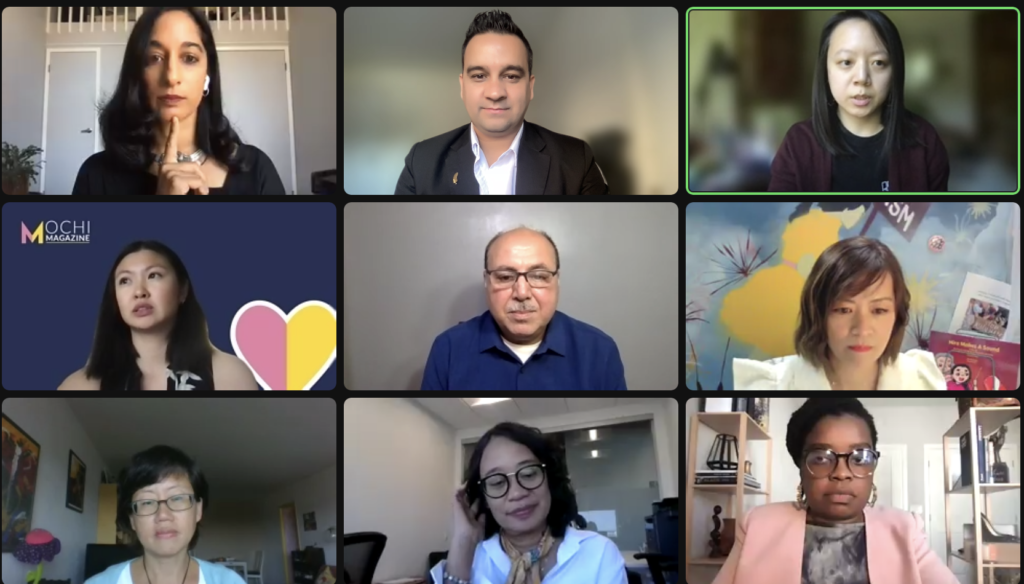
I returned to the US and started grad school at Columbia on September 4, 2001 – a week before 9/11. I saw the second tower fall. Many of my colleagues were aid workers from conflict zones. While they focused on immediate disaster response, I thought about how this would shape New York City and immigrant life. I visited communities in Queens and Brooklyn where violence was being perpetrated, but it wasn’t making headlines. I visited the home of a Bangladeshi family whose sons, US citizens, were subjected to repeated FBI raids. They were taken without warrants, and no one was talking about it. Entire neighborhoods were decimated, families were broken apart. Over the years, we saw how these communities were turned against each other through surveillance and espionage.
I became very activated. I believe immigrant storytelling needs space for subjectivity and emotional truth. Most immigrants and refugees, even if they arrive legally, experience trauma – the rupture of identity, displacement, loss. Asian Americans are the fastest-growing immigrant population in the US, the most linguistically diverse, yet we have massive amounts of unexamined historical trauma and repression within our communities. The Indian American community has the third-largest undocumented population in the US – over 700,000 people. We have little collective conversation about what this means, why it’s happening, and its connection to what’s happening in South Asia amidst climate change and political crisis. That’s how I got into this – exploring what democracy and identity mean for diaspora communities.
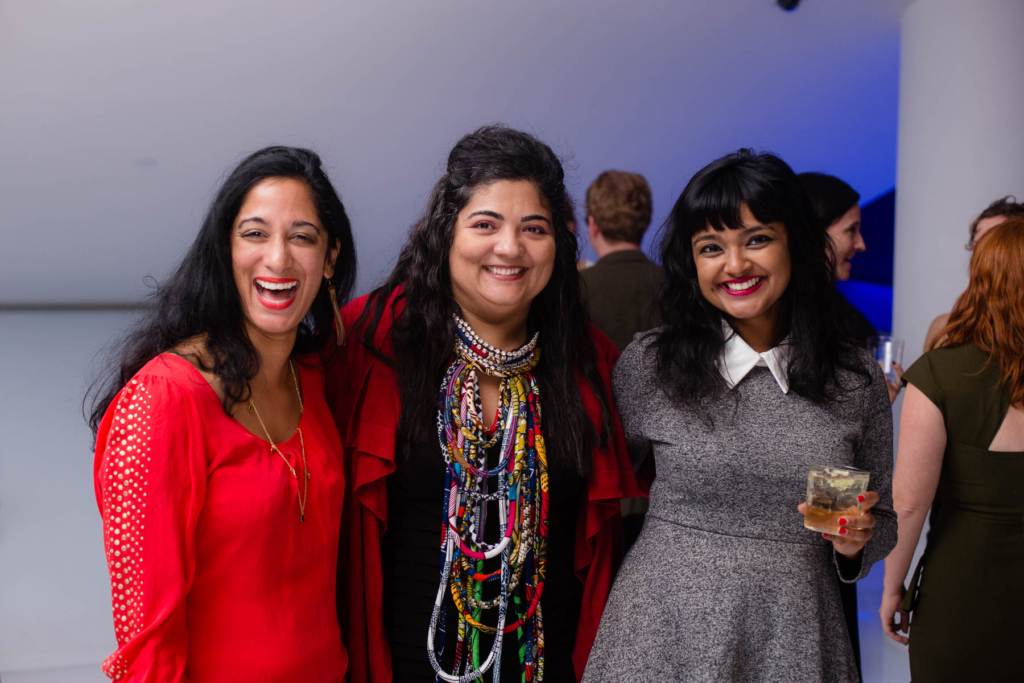
Dr Shabana Parvez: That’s definitely a reason to be activated. How did this lead to you forming the Asian Media Initiative and becoming its director?
Kavitha Rajagopalan: While reporting my book, I realized that some of my most illuminating sources were reporting from the ethnic press, community newspapers whose journalists were also leaders and advocates within those communities. A friend invited me to become the newsletter editor for one such newspaper. At the time, my son was still unwell (he’s completely healed now). I joined the Center for Community Media at a critical time in its evolution. It was a professional association for ethnic press and hyperlocal independent press in NYC, repositioning itself as a national resource center for community-based journalism for immigrants and communities of color.
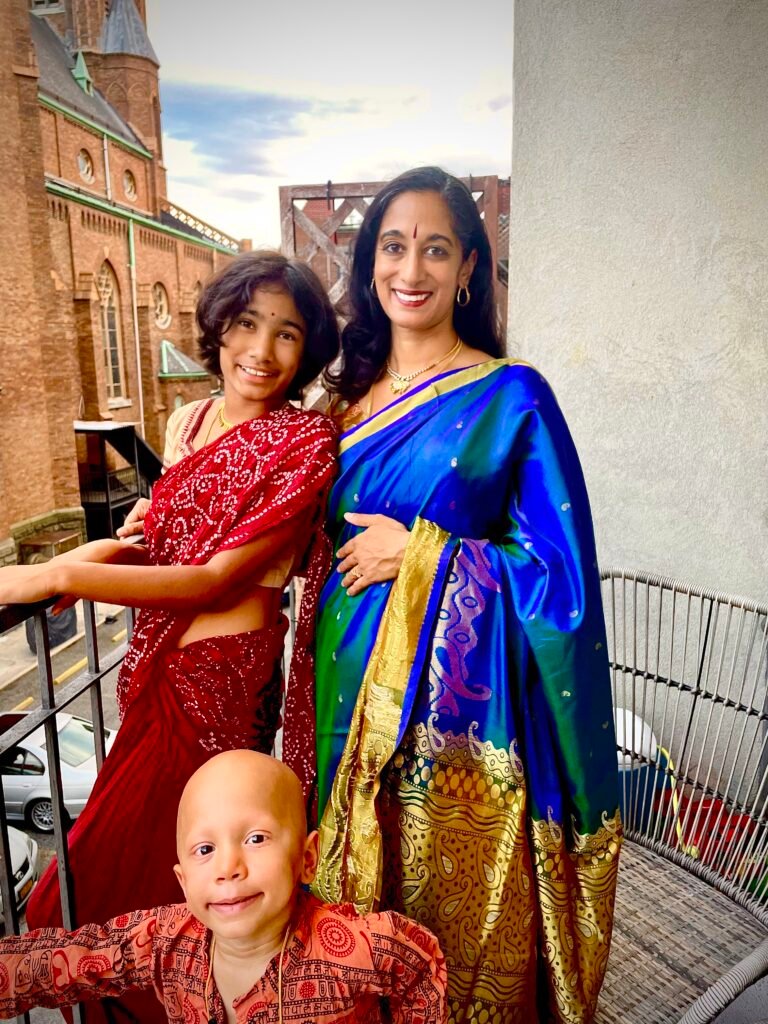
We were seeing a decline in local journalism, and it was crucial to acknowledge that local journalism had not only never served communities of color, especially Asian immigrant communities, but had often actively harmed them. I saw an opportunity to reconnect with the complexity of immigrant stories by studying the evolution of Asian American community journalism. The Center for Community Media had Black and Latino media initiatives, but not an Asian one. After a couple of years of organizing, we launched the Asian Media Initiative in 2022.
Our first order of business was to recognize that we were no longer just free newspapers in grocery stores. We now have podcasts, human rights documenting projects, lifestyle magazines. There’s a bridal magazine exclusively for Iranian Jewish women, a magazine specifically for Punjabi truckers. Our community has an insatiable appetite for storytelling. Over the last two years, I’ve been trying to understand what community journalism looks like for our communities now, with the rise of authoritarianism in Asia, massive climate catastrophe displacing communities, and nations within Asia becoming major immigrant destinations. What does it mean for Asian American journalism with the fall of Kabul and Hong Kong, when our free press pillars in Asia are pushed into the diaspora or digital space? Our communities consume news not just from back home, but also from US-based platforms, WeChat, Facebook, TikTok. We’re consuming and creating stories in this massive global network, trying to communicate so we can be visible and have access to basic rights and services. You can hear stories in the ethnic press about land use debates in Queens alongside stories about internet shutdowns in Bangladesh and the implications of the fall of the Shiksa regime. In New York City alone, there are at least 20 different Bangladeshi language newspapers. There are communities all over with stories to tell.
Dr Shabana Parvez: So, how are you bringing all these different media together, connecting them in a database? And tell me about your report, “Asian Media on the Front Lines.” It seems this research fed into that report, showing how these smaller, local journalistic pieces are reporting on the diversity and complexity of the Asian population in different communities.
Kavitha Rajagopalan: Yes, exactly. Before launching the Asian Media Initiative in 2022, I realized we needed to tell the story of the sector itself. There are existing organizations focused on the Black press and the Latino press, though nowhere near enough. But the Asian American community press wasn’t well-conceptualized or visible. So, I wrote this report in 2021, looking at how Asian American community media, including Pacific Islander media, were responding to the converging crises of the COVID-19 pandemic, the anti-Asian hate crisis, rising disinformation targeting our communities from overseas, and the massive polarization resulting from these influence campaigns.
We created a framework around this, and in 2022, after launching, we began compiling the first national map and directory of the sector. In 2023, we launched the report. It took quite some time. There are 683 outlets in the map and directory serving Asian Americans and Pacific Islanders across the continental US, US territories and colonies, and freely associated states across the South Pacific and Asia. These are all in the directory. These 683 outlets serve Asian Americans and Pacific Islanders in 56 different languages.
As we put this together, we realized that while we have a robust and diverse ecosystem, vast segments of our communities are not served within our community media either. I started thinking about how our community media can come together to serve tribal indigenous communities, multiracial communities, communities not represented from our countries of origin, and caste-oppressed communities. These are often the leaders of our political awareness movements and community organizing efforts. Are they not being served, or do we need to expand our understanding of our ecosystem?
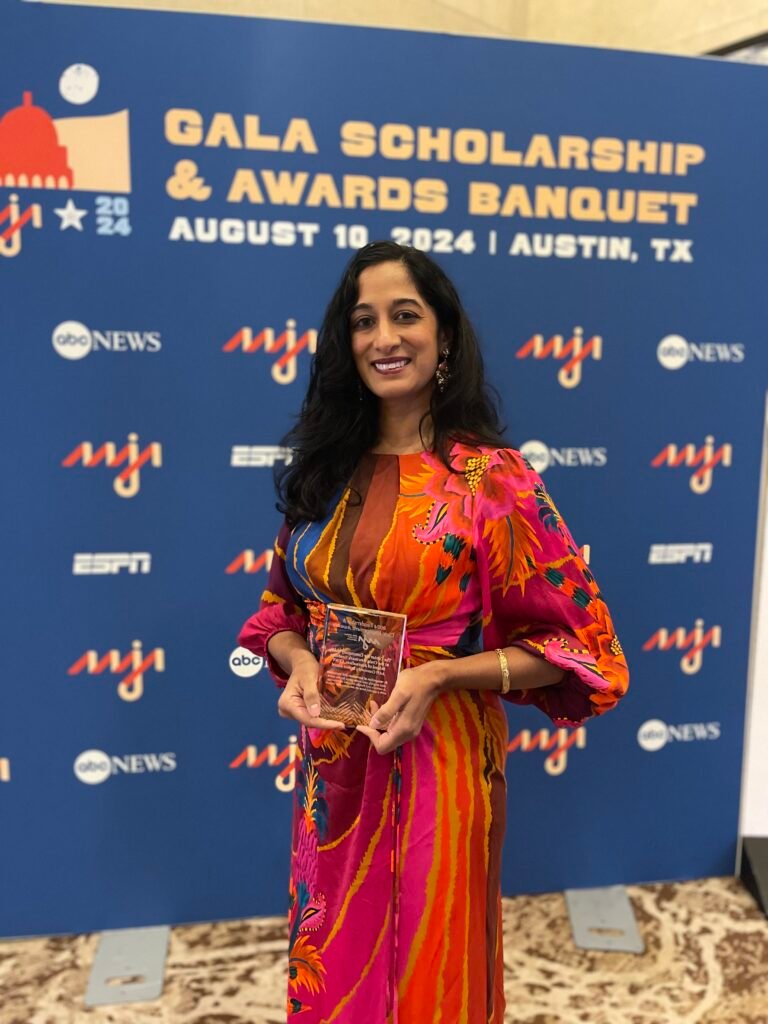
I followed up with “Asian Media on the Front Lines” this year, May 2024, on the 100th anniversary of the Johnson-Reed Act, which banned immigration from Asia. We published a report, “API Media: Origins and Futures,” over 80 pages long. This is the first effort to synthesize the histories of all these different sectors – Armenian media, Chinese-language media, Arab American media. Some of the stories are so powerful.
For example, I found that the first Indian American journalist in the US in the 1920s couldn’t get hired at any newspaper and ultimately got a job at Negro World, owned by Marcus Garvey, and became editor-in-chief there. There’s this legacy of multiracial democracy upheld primarily in the Black press that can serve as a template for other media sectors.
Dr Shabana Parvez: What are some of these untold stories about migration that you think the media should focus on more?
Kavitha Rajagopalan: Our long legacy has suffered from historical erasure. The first Chinese-language newspaper began publishing in the US in 1854. These communities arrived around the same time in the 19th century as America was becoming a global empire and attracting immigrants from Europe. At the same time that Russian Jewish, Italian, and Irish immigrants were seeking their futures, we were also here.

Our arrival was driven by US imperialism in Asia. The annexation of the Philippines, which we don’t learn about in history classes, prompted a genocide there. An estimated 600,000 people were killed in the war following the annexation. The US created a category of student immigrants, called “pensionados,” who became the founders of the first Filipino newspapers in the US.
All our journalism is rooted in displacement and activism, demanding rights and freedoms. There were massive assaults against Indian Americans. The first Indian immigrants were Punjabi Sikhs, many of whom were part of Queen Victoria’s military guard. They brought rice farming to the US. Asians delivered an economic miracle for California.
Just as with the Black press, we see how the white-led press was often complicit in violence against Asian Americans. There were attacks on Chinatowns, attacks on Filipinos, massive lynchings against Indian Americans. We have a rich legacy and archival tradition to draw from.
We have this idea that Asians are “permanent foreigners.” But in New York City, between 1890 and 1945, there were over 55 Arabic-language newspapers being published. There were over 100,000 Arab Americans in Little Syria. Those communities were displaced due to land use and urban planning policies, just like Lincoln Center displaced Puerto Ricans. The famous Lebanese spice emporium, Sahadi’s, was founded there and ultimately displaced to Brooklyn. That’s the same community that faced the fallout from post-9/11. These patterns repeat themselves. We have a right to know our history.
For example, Arab Americans in New York innovated the line of type to produce Arabic press and revolutionized Arabic language literature across the world. I think we should know our history. It gives me an enormous sense of pride.
Dr Shabana Parvez: There are many untold stories that need to be brought to light. In the recent context of global crises like the refugee crisis and COVID-19, how has the discourse around migration evolved or changed in the past decade?
Kavitha Rajagopalan: I think our press can step up here. Community stories are often owned and controlled by a certain group. However, we’re seeing powerful things happening across the global Asian diaspora. You have communities like the People’s Archive of Rural India, Frontier Myanmar, the Initium project, or Rappler from the Philippines. These digital media outlets refuse to stay silent. In Gaza, journalists are documenting their own genocide, even as they are being killed. An Afghan woman of Hazara descent is running a newspaper with undercover women journalists in Afghanistan, doing investigative reporting on the Taliban. They have no hope of changing the Taliban’s policies, just as the reporters in Gaza have no hope of changing the policies towards Gaza, and as caste-oppressed rural workers in India have no hope of changing the Modi regime’s policies. But they are doing it anyway.

There’s an uncaptured power to these narrative efforts, these communities saying, “We will not be shoved back into the darkness. We are going to tell our own stories in our own voice, in our own way. You can take it or leave it, but we are not hiding anymore. We are not going to let you erase us.” Our foreign policy largely follows Cold War-era templates. What if there had been a way to network and empower the pro-democracy protesters in Iran, Pakistan, Myanmar, Sri Lanka, Bangladesh, India, and Korea? What if we could harness the power of this refusal to be erased?
I take courage from the anti-caste movement in the US, which has learned and built power together with the century-old anti-caste movement in India, to bring real power and rights to communities that Indian Americans insist on erasing.
Dr Shabana Parvez: What lessons can countries learn from these urban immigrant communities to build more inclusive policies?
Kavitha Rajagopalan: Instead of looking to our communities, which often recreate oppressive hierarchies, I look to Asia. Authoritarianism has existed there for a long time. This past summer, I visited India for the first time in years. It was a massive homecoming. I had dinner with friends I worked with at a newspaper years ago, and they said, “You all are talking about authoritarianism and democratic backsliding. It’s been here in Asia for over a decade in India, and much longer elsewhere.”
Many of these countries have massive informality. They have somewhat restrictive states opposed to free expression and trying to control institutions. But they also have massive networks of people who have been communicating freely for over a century. Look at the histories of radio salons or ittihad in Bangladesh. These coastal communities still have newspapers where communities write their village news and pass it on. Across the Middle East, you have hakawatis or storytellers. We have rich narrative traditions to draw from, showing how people can continue to exist. In defiance of power structures that look to erase them or ignore them.
Dr Shabana Parvez: Regarding social cohesion in diverse, pluralistic societies, what role does media, especially community media, play in fostering it?
Kavitha Rajagopalan: I’ve had many conversations about whether our communities need a single “paper of record” or a diverse ecosystem of smaller outlets. I believe that marginalized communities should have platforms they control, where they have power over their storytelling, and where their stories are not edited by those who don’t see their full humanity. Even if community media leadership has specific viewpoints or biases, they are passionate about their work. They aren’t doing it to get rich; they’re doing it as a service. In this age of polarization and disinformation, I hear from publishers how impossible it is to serve deeply conflicted communities. So, I think it’s important to have platforms that act as a town square, a public square, where we can all come together. I don’t think fragmentation ultimately serves us well, but what that looks like is the question.
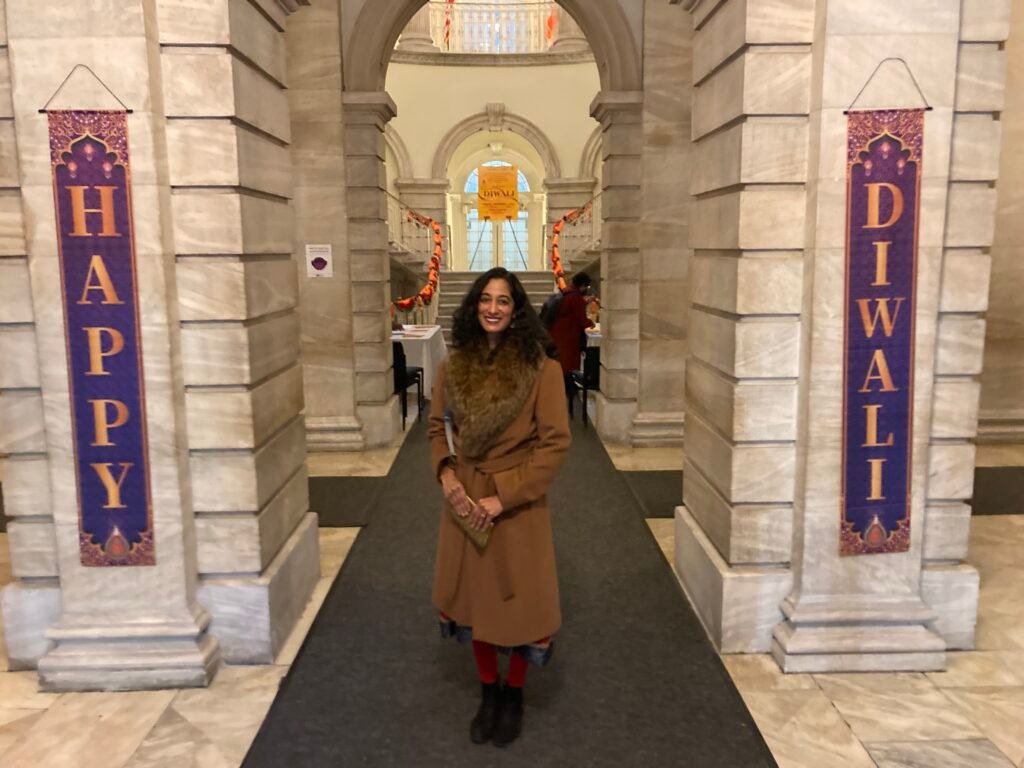
Dr Shabana Parvez: What critical skills should journalists have to cover issues related to immigrant communities and migration?
Kavitha Rajagopalan: That’s the hard part. Do you, as a publisher, create endless news products? There’s a publisher in Georgia with different podcasts in different languages for various Asian communities, knowing that members of one community won’t listen to another. But I wonder how powerful it would be for Indian Americans and Filipino Americans, or Korean Americans and Chinese Americans, who share physical spaces, if they had a shared platform. There are few explicitly pan-Asian outlets. Even places like Seattle’s International District, which is a pan-Asian Chinatown by design, or Jackson Heights, which everyone thinks is Indian but was once Pakistani and then Bangladeshi, and now has Tibetan and Nepali communities, are multi-racial and multi-ethnic meccas.
I want our journalists to be extremely skilled. Community journalists are already running print and digital outlets, creating news platforms, apps, streaming services, engagement vehicles, publishing on WhatsApp, and doing events. They have more skills than most mainstream journalists. What they need is funding. I’d love to see massive pooled funds for our journalists so they have time to observe the community and find meaningful ways to create community interactions and spaces together.
Growing up in North Carolina, we didn’t have an Indian enclave. Our Indian friends were Gujarati, Malayali, from different caste backgrounds, Hindu, Muslim. It was all different ways of being Indian together, and I benefited from that. I think our communities, as they grow more complex, will benefit from having solidarity across our differences.
Dr Shabana Parvez: I want to go back to something you mentioned about the Taliban and the women making their voices heard. You’re also on the board of Unchained At Last. Talk about your advocacy there, which focuses on helping women leave forced marriages, and how it ties into your other work.
Kavitha Rajagopalan: I was on the board for many years, but stepped away when my son got sick. It’s an incredible organization founded by Fraidy Reiss. She was raised in an ultra-Orthodox Jewish community in New Jersey and ultimately left both her marriage and her community. She’s one of the most powerful women I’ve ever met. She wasn’t allowed to pursue education within her community, but after leaving, she decided to get an undergraduate degree. She Googled “college New Jersey” and ended up being accepted at Rutgers. There, she forged a lifelong friendship with a Palestinian woman, and together they founded Unchained At Last to help women leave coercive, forced, and arranged marriages.
They brought me on because one of the largest arranged marriage communities in the US is Indian American. However, the Indian American arranged marriage situation is complex and tied to class. I started talking to women facing challenges due to immigration. I don’t think people realize the challenges even highly skilled South Asian immigrants face. It’s not just undocumented immigrants; H1B visa holders’ spouses aren’t allowed to work. The H1B process is incredibly difficult, expensive, and the green card backlogs are long.
Marriage is becoming a mechanism for immigration. This has always been the case, but it’s now contributing to arranged marriages and the further oppression of women. US citizens are being coerced into arranged marriages with men who want to immigrate for work but can’t find other avenues. These are the ripple effects of the US refusing to reckon with its immigration reality. It feeds upon traumas and oppressions within communities, especially patriarchal ones, to further oppress women, especially vulnerable, rural women without status, wealth, or power.
Some of the families I worked with included women brought here as spouses who were then put into positions of indentured servitude, experiencing abuse because they weren’t allowed to work or have their own accounts. These are unconscionable situations for a country that positions itself as a champion for women’s rights overseas.
Dr Shabana Parvez: It’s true, as you talk about women’s rights and human rights, you also do some teaching. You’ve taught on migration and writing. What advice would you give to aspiring journalists, researchers, or young people who want to focus on these issues?
Kavitha Rajagopalan: It’s interesting you ask. My 12-year-old daughter wants to be a journalist, and I worry for her because the field is in flux and not a safe or welcoming place for young women of color. My husband is African American, and my children are biracial, which I see as a superpower, but it also means they face multiple barriers. My daughter, thankfully, is quite a vocal feminist.
Dr Shabana Parvez: I wonder where that came from!
Kavitha Rajagopalan: I have no idea! But she browses my bookshelves and reads Octavia Butler, Maurice Conde, Margaret Atwood. She comes with me to gatherings. I’m part of a collective of South Asian and women of color writers. We’re putting out our first anthology on December 12th. It’s curated by the Sri Lankan American writer Naomi Mía, who is dedicated to collective liberation for women of color. She created writing circles, which we started calling our “coven,” where women shared stories of their grandmothers and mothers. My daughter has attended some of these. We have interesting histories here from South Asian feminist poets and writers, and she’s been reading their work.
My advice to young writers is: 1. Don’t restrain yourself to one writing format. Learn the tools of journalism, but don’t be limited by them. Read poetry and diverse literature. 2. Know our history. Read not just American literature and journalism, but also journalism from overseas. I recommend reading reporting from Afghanistan, and magazines like New Lines Magazine or literary reviews like Afka or Mok’s Review, which tell stories in a nuanced way. Don’t feel constrained by the concept of journalism. Many young journalists feel pressured by fact-checking. I tell my daughter, “Get the facts right, but if you’re reporting on communities, understand the identities and emotional truths of the people you’re reporting on.”
Dr Shabana Parvez: So you can represent them accurately.
Kavitha Rajagopalan: Yes. Read their histories, read our foremothers.
Dr Shabana Parvez: You mentioned the anthology. Is that your next project, or what’s next for you at the Asian Media Initiative, in terms of research or writing?
Kavitha Rajagopalan: The Asian Media Initiative will continue networking journalists and working towards building sustainability within the sector. This will involve growing the audience and creating new mechanisms for revenue and resources. Personally, I’m increasingly interested in diasporic democracy for Asian Americans. I’m working on a new book that will look at free expression and what democracy means for communities in global diasporas, under multiple regimes and in digital space. I believe our world is shadowed by a parallel world; we exist in a multiverse where our physical and digital worlds coexist in strange parallels, influencing each other. The digital world has a life and reality of its own, yet it dictates how we perceive and exist in our physical world. I’m curious to tell those stories.
Dr Shabana Parvez: In all your roles in media, research, and advocacy, what leadership lessons have you learned?
Kavitha Rajagopalan: The leadership models we see in institutions and governments are top-down, strict, and oriented toward preserving structure and unified voices. I’d love to see a different world. In my small corner of the Asian Media Initiative, I’ve found that leadership means listening and allowing people to express themselves in complex ways and dictate how things are set. For example, when creating the map and directory, our small research team collectively decided how to define our communities, which languages to include, and how to name and spell them. Our research methodology involved focus groups and listening sessions with community members. We didn’t just go to the US Census or a couple of community leaders and ask, “What’s the national language of Nepal?” because we know the history of linguistic ethnic cleansing in many communities. We wanted to hear how people represent their own communities.
This made things messy, and our data wasn’t standardized. But I’m starting to think that maybe data won’t be the path to liberation for our people. Maybe we have to operate within a data landscape but also allow for complexity.
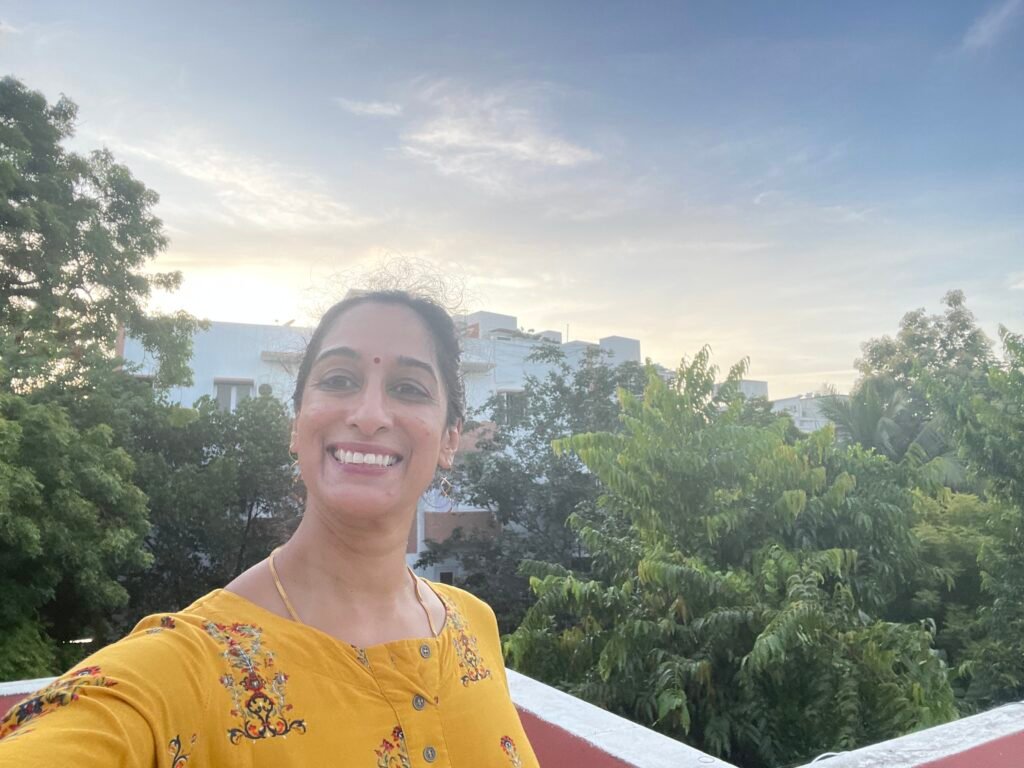
Dr Shabana Parvez: What has been your most rewarding professional accomplishment so far?
Kavitha Rajagopalan: Writing a book was really special. It’s a painful process. In the first years after its publication, it’s like having a child – you doubt yourself and see all the mistakes. But now, 15 years later, I continue to see the value of having those stories told. I’m honored that people entrusted me with such intimacy. What a gift! So, writing a book is truly special.
Dr Shabana Parvez: It’s a legacy, a voice.
Kavitha Rajagopalan: It’s not a bestseller, but it exists. Even today, I get messages from people discovering it for the first time, learning about these communities and about themselves. That’s humbling. I’m lucky I wrote it when I was young because the older I get, the more self-doubt I have about my right to hold other people’s stories. But I’m excited to embark on another one.
Dr Shabana Parvez: It’s still impactful. In all your work, and as a mother, what’s your secret to success or what keeps you motivated? How do you stay healthy and maintain balance – emotional, physical, mental, spiritual?
Kavitha Rajagopalan: It’s my community of women, especially women writers. I have a network at the Asian Media Initiative, the Asian Media Women’s Network, where I’ve made lifelong sisters. I have writing communities, a primarily Black and South Asian women of color community. And my close friends who have walked with me through my son’s illness, my father’s passing, and caring for my mother. I was a caregiver for about 15 years, for my mother-in-law, my father, and then my son. Those experiences show you what it means to survive and to lose, and they’ve made me a more empathetic writer and a stronger person.
I’m a firm believer in therapy. My South Asian woman therapist has helped me. Therapy is about storytelling – the story of your life, your children’s lives, your mother’s. We, as South Asian women, are keepers of our mothers’ stories. My grandmother was a child bride, married at eight. My other grandmother was 13. I believe her marriage was a trauma response to losing five children. My grandmother was the wife of a great man in his town, but no one knows the stories of the women. We are keepers of these stories, and we must pass them on.
Exercise is important, especially when you spend a lot of time at a screen. And food! In our communities, food is medicine, healing, religious worship, ritual, gathering. There’s nothing more healing than making a meal and gathering around it. I’ve spent time in different immigrant communities. In Utica, with Karen immigrants from Myanmar, we gathered around a child’s birthday party that was also a church service, and then sat on the floor with plates of food, sharing stories.
I feel connected to community journalism because it grows out of this story of gathering around a table, telling stories, singing songs and poems. I remember a seminar on indigenous ways of knowing. These indigenous scientists, from different nations, said that in their traditions, there’s a story of lighting a fire on a boundary between nations, where they gather and share tobacco or, in our community, tea and food. It’s about making a place of gathering and storytelling instead of conflict.
India has both the most militarized and the most open borders. I think about which communities are stronger. I know both sides are traumatized now, but I think about how it was different in the past and could be different in the future.
There are villages on the Turkish-Syrian border where, during Ramadan, they gather on either side and feast together, bringing food from the north and south. That may be the way forward for our people.
Dr Shabana Parvez: It’s a beautiful vision – a universal table. Maybe we can live to see it.
Kavitha Rajagopalan: Probably idealistic, but let’s hope.
Dr Shabana Parvez: It is idealistic, but why not? It’s worth striving for. It’s been amazing talking to you. We’re over time, but it’s been fascinating. You’re clearly passionate and successful. I know you have more stories to tell, and I hope we meet again soon.
Kavitha Rajagopalan: I hope so too. Thank you so much for having me, and thank you to your audience. Please everyone, find me. It’s been such a pleasure. I’m so grateful for your work.
Dr Shabana Parvez: Thank you so much. Okay, see you. Thank you again. Bye-bye.
Kavitha Rajagopalan: Thank you.

